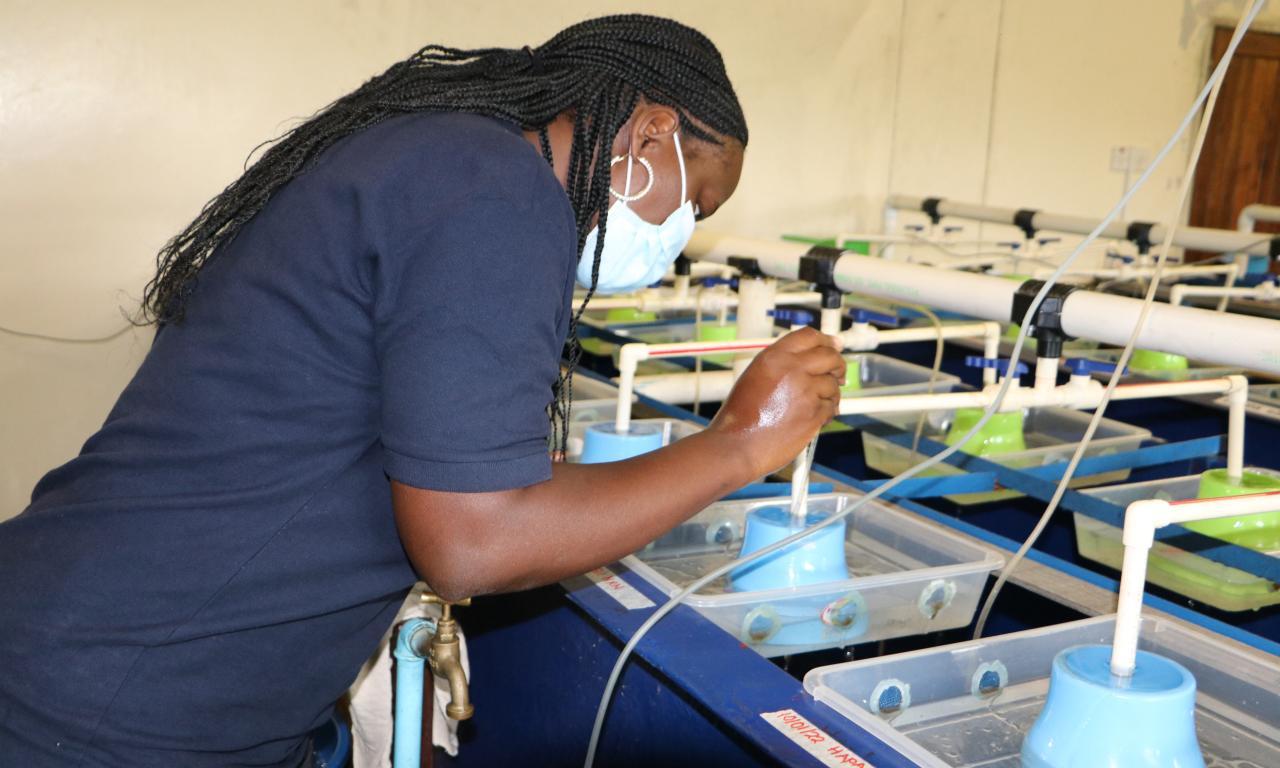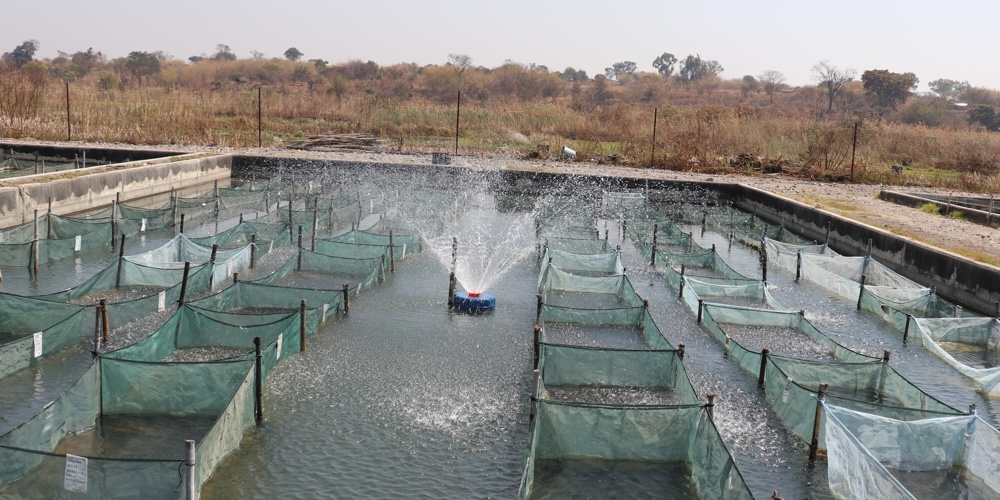
At the National Aquaculture Research and Development Centre (NARDC) in Kitwe, Zambia, the Genetic Improvement Program (GIP) has made significant progress, achieving a 12.6% improvement in fish growth from the original breeding stock (first generation) to the next generation (G0 to G1), far exceeding the initial target of 7.5%. This breakthrough means faster-growing fish, higher yields for farmers, and greater profitability, ultimately strengthening Zambia’s aquaculture sector.
Discussions with the Head of the Research Station at NARDC revealed that there is strong coordination between WorldFish and the government through NARDC in the implementation of the GIP. This collaboration has led to the successful production of an improved Kafue bream strain. The Head of the Station expressed the government’s excitement about WorldFish’s expertise in the GIP, particularly its commitment to continuing support for research and operational activities beyond the official project duration.
WorldFish extended its support beyond the project’s lifespan to ensure that the government could effectively manage and sustain the initiative.
“I appreciate the effort from WorldFish, as they have covered these expenses; otherwise, this experiment would have collapsed, and all the efforts invested in producing an improved breed would have gone to waste. NARDC has also contributed some resources, though at the expense of other important programs, demonstrating our prioritization of the GIP. This highlights the need to strategize for the long-term sustainability of the program,” explained Head of NARDC, Edwin Kikamba.

Improved Strain for Zambian Farmers
The WorldFish-led genetic improvement program for Kafue bream at NARDC in Kitwe has reached the third generation signifying the production of high-performing Kafue bream (Oreochromis andersonii), a key fish species for local farmers and consumers.
Dr. Samuel Bekele Mengistu, the lead scientist from WorldFish, explained that the project began with a diverse founder stock which was collected from the Luangwa River, Upper Zambezi, and NARDC in 2020. This wide genetic diversity has helped create stronger, more productive and climate-resilient fish. He added that the team is now developing the third generation (G3), with 126 families already bred, to continue improving fish performance and sustainability for fish farmers.
To ensure these benefits reach smallholder farmers, 69 private hatcheries and 18 government hatcheries have been identified to receive the improved fish breeds, and training on best management practices for aquaculture. This effort aims to provide 19,600 smallholder farmers with better-quality fingerlings, increasing access to improved seed and boosting fish production nationwide.
The GIP is a collaborative initiative between WorldFish and the Zambian Government, supported by the Southern African Development Community (SADC) through funding from the African Development Bank. The goal of this initiative is to enhance the productivity and sustainability of fish farming in the region through selective breeding and genetic improvement. The initiative has been implemented from 2023 to 2025, and it builds upon the Zambia Aquaculture Enterprise Development Project (ZAEDP), which was implemented between 2017 and 2022.
Zambian farmers face challenges in accessing quality seed, often resulting in slow growth and low survival rates, particularly among indigenous tilapia species. The GIP seeks to address this issue by developing a fast-growing indigenous Kafue bream, with a focus on improving its growth rate, harvest weight, and survival. A faster-growing Kafue bream translates to lower input costs, a reduced carbon footprint, and increased production and profitability in a sustainable manner.
From Broodstock to Better Yields
The Genetic Improvement Program (GIP) for Kafue bream began with the establishment of a disease-free broodstock foundation at the National Aquaculture Research and Development Centre (NARDC) in Mwekera, Kitwe. Broodstock was collected from the Zambezi, Luangwa, and Kafue River systems and underwent rigorous screening through tissue sampling and laboratory analysis to eliminate the risk of diseases such as epizootic ulcerative syndrome (EUS) and tilapia lake virus (TiLV). Once confirmed healthy, the fish were tagged, genotyped, and selectively mated across populations following a structured breeding design to establish the base population. Passive Integrated Transponder (PIT) tags were used for identification, ensuring the traceability of broodstock, families, and offspring throughout the GIP.
To build national capacity, WorldFish trained the Department of Fisheries in the Ministry of Fisheries and Livestock to manage the GIP. The training program was designed to address critical gaps identified during the implementation of various Genetic Improvement Programs (GIPs) across different regions. It was tailored to meet the needs of target beneficiaries, including training participants, and carefully considered the most effective methods for delivering training materials. Additionally, the training modules were co-developed in collaboration with key trainers specializing in specific topics within the curriculum.
Furthermore, WorldFish supported NARDC by procuring essential equipment for the GIPs, including industrial pressure washers, water and fish tanks, water heaters, and submersible drainage pumps. This equipment helps regulate hatchery temperature, improve pond aeration, and enhance heat conservation, ultimately supporting better mating and growth of fish families at the GIP facility.
Together, these efforts are helping to transform the aquaculture sector in Zambia by enhancing long-term resilience and inclusive access to high-quality fingerlings from improved fish breeds for smallholder farmers across the country.


